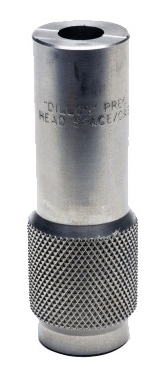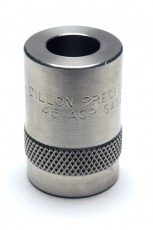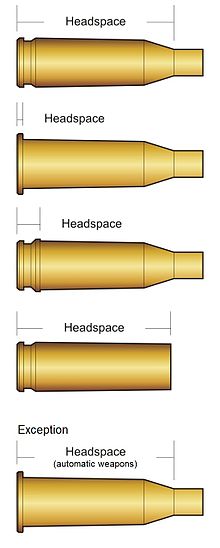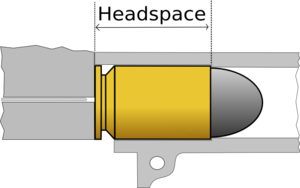Have a Question?
January 2019
You can subscribe to this Newsletter if you sign up for an account with Titan Reloading.
CLICK HEAR TO REGISTER AN ACCOUNT
CLICK HERE To browse an archive of past newsletters.
RELOAD WITH CONFIDENCE!
What’s Your TITAN Advantage?….WE RELOAD!

The Titan Crew hopes you all had a wonderful Christmas and may your 2019 be HAPPY and PROSPEROUS. THANK YOU to all our loyal customers for making 2018 a good year and for sharing us with your friends. Many of our new customers this year found out about us because of a referral from someone they knew. Our continuing goal is to live up to your recommendations and to provide “Service and Support Second To None”.
We are truly enjoying all the friends we have made through Titan Reloading and look forward to many more. Feel free to contact us. When possible, please email us rather than call. Due to our limited phone system and staff we are able to respond to your questions quicker via email. Please include your full name or order ID number with any order inquiries. Service and Support is our top priority. As always, you will find many answers to questions in the “FAQ” and “Help Videos” areas of our website www.titanreloading.com . Check us out on Google + , Facebook and YouTube.
Dennis / Titan Reloading
FEATURED PRODUCT:
DILLON CASE GAUGES

Dillon handgun case gauges allow you to check your handgun ammunition to ensure it will fit a minimum sized chamber. Made of stainless steel for long life.
Rifle headspace case gauges assist in proper size die adjustment and in checking cases for whether they need to be trimmed. Essential for long case life, especially with semi-automatic firearms! Made of stainless steel for long life.


INSIGHT OF THE MONTH:
Firearm Headspace
An Article From Gun Digest
Headspace is one of the most critical measures in your firearm. A quick definition: the distance from the face of the locked bolt to a datum line or shoulder in the chamber that arrests the forward movement of the cartridge. The term originated when all cartridges had protruding rims, so the measure was initially taken only at the head. Now it includes other spans.
Headspace is measured from the bolt-face to the mouth of a straight rimless hull like the .45 ACP, whose mouth stops against a small, abrupt shoulder at the front of the chamber. In a belted magnum, the stop is the leading edge of the belt, in the back of the chamber. On a .30-30 case it’s the front of the rim. The datum line for rimless or rebated bottleneck rounds like the .270 and .284 lies on the shoulder. Semi-rimmed cartridges theoretically headspace on the rim, but sometimes (as with the .38 Super Automatic) the rim protrusion is insufficient for sure function. The case mouth then serves as a secondary stop. The semi-rimmed .220 Swift has a more substantial lip; but most handloaders prefer to neck-size the Swift, so after a first firing, the case actually headspaces on its shoulder.
If there’s too little headspace, the bolt won’t close on a chambered round. Too much headspace can shorten case life, even cause case ruptures and dangerous gas escape.
When you pull the trigger, many events follow. The blow to the primer crushes shock-sensitive priming mix, which detonates. The explosion shoots flame through the flash-hole in the primer pocket, igniting the gunpowder. The resulting gas expands rapidly, stretching the ductile brass case. The thin case wall up front is ironed against the chamber wall, but the solid rear section around the primer pocket stays close to its original diameter, slightly smaller than the chamber. Gas pressure shoves it back against the bolt face. Still expanding, the gas thrusts the bullet out of the case.
Because cartridges vary slightly in dimensions, and each must chamber easily, the chamber must be a tad bigger than the average case. If there’s too much distance between the bolt face and the point in the chamber that stops the forward motion of a cartridge, however, you have excess headspace.
Until the thick case head moves rearward to meet the bolt face, the bolt face isn’t supporting it. The striker has pushed the case to its forward stop. Excess headspace causes excessive stretching. After repeated firings, the “work hardened” case becomes brittle as well as thinner just ahead of the web. It no longer stretches easily and can crack at the web, or even separate.
A cracked case is dangerous because it spills powder gas into the chamber. That gas jets through the tiniest corridors at velocities that can exceed bullet speed. It may scoot along the bolt race, through the striker hole, into the magazine well. It can find your eye faster than you can blink.
Gunsmiths measure headspace with “go” and “no go” gauges. The “go” gauge is typically .004 to .006 shorter than the “no go” gauge for rimless and belted cartridges. The bolt should close on a “go” gauge but not on a “no go” gauge. Theoretically, if the bolt closes on a “no go” gauge, the barrel should be set back a thread and rechambered to achieve proper headspace. However, many chambers that accept “no go” gauges are still safe to shoot. The “field” gauge, seldom seen now, has been used to check these (mostly military) chambers. It’s roughly .002 longer than a “no go” gauge.
Minimum and maximum headspace measurements are not the same as corresponding minimum and maximum case dimensions. For example, a .30-06 chamber should measure between 1.940 and 1.946, bolt face to shoulder datum line. A .30-06 cartridge usually falls between 1.934 and 1.940. Case gauges perform the same check on cartridges that headspace gauges do in chambers.
An obvious difference: case gauges are female and don’t indicate headspace. They simply show whether a cartridge will chamber in a rifle that’s correctly barreled. Headspace is a steel-to-steel measure. Altering case dimensions changes the relationship of the cartridge to the chamber. Reducing head-to-datum line length of the round can result in a condition of excess headspace, even if the firearm checks out perfectly.
Headspace positioning of rimless, rimmed, belted and straight cartridges

A pistol cartridge which headspaces off the case mouth, e.g. .45 ACP

Titan Reloading 994 W. Sumner St., Hartford, WI 53027 1-262-397-8819
WE’RE SETTING THE STANDARD, ONE CUSTOMER AT A TIME.
You are receiving our monthly Titan Reloading Newsletter because you subscribed to it when you set up your account on our website www.titanreloading.com. We don’t want you to miss out on the newsletters we send you. We also respect all our valued customers consent. That is why we are asking all of our readers to decide if they would like to discontinue receiving newsletters from Titan Reloading. If you’d like to stop receiving our newsletters please click the “unsubscribe” link at the bottom of the newsletter.

